 Web Front-end
Web Front-end JS Tutorial
JS Tutorial How to use the ajax post method in the Django framework (graphic tutorial)
How to use the ajax post method in the Django framework (graphic tutorial)Django is an open source web application framework, written in Python. This article introduces how the Django framework uses the ajax post method. Interested friends should come and learn together.
Django is an open source web application framework. Source code web application framework, written in Python. The MVC software design pattern is adopted, namely model M, view V and controller C. It was originally developed to manage some of the news content-based websites of Lawrence Publishing Group, that is, CMS (Content Management System) software. And was released under the BSD license in July 2005. This frame is named after the Belgian gypsy jazz guitarist Django Reinhardt.
Today I found a problem when trying to call jQuery's ajax. The server can return normally using the GET method, but not the POST method. Later, testing the form-based POST method also didn't work. As long as POST will report HTTP 403 error! very strange. . .
After searching a lot of information on the Internet, it turns out that it is due to a problem with Django's Cross Site Request Forgery protection mechanism. This mechanism is to protect against CSRF attacks. What is a crsf attack? Taolin blog has a relatively simple explanation. Solution Django's official website has provided http://docs.djangoproject.com/en/dev/ref/contrib/csrf/. After modification according to the instructions, ajax can be posted smoothly.
The specific method is to first solve the POST of the form. Find MIDDLEWARE_CLASSES in the settings.py file and add a middleware: 'django.middleware.csrf.CsrfViewMiddleware'. The modified code is as follows:
Python code
MIDDLEWARE_CLASSES = ( 'django.middleware.common.CommonMiddleware', 'django.contrib.sessions.middleware.SessionMiddleware', 'django.middleware.csrf.CsrfViewMiddleware', 'django.contrib.auth.middleware.AuthenticationMiddleware', 'django.contrib.messages.middleware.MessageMiddleware', 'django.middleware.csrf.CsrfResponseMiddleware', #加入这个中间件 )
After this modification, the problem of HTTP 403 submitted by form POST can be solved. Just changing the Post submission of ajax in this way is not enough. You also need to hook up a cookie processing process for each submission. That is, every time you submit, this process is triggered and the csrf token is added to the submitted http header. Fortunately, if you use jQuery to handle ajax, Django directly sends a piece of code to solve the problem. Put it in a separate js file and introduce it in the html page. Note that this js file must be imported after the jquery js file is imported. I copied the code directly, as follows:
Js code
$('html').ajaxSend(function(event, xhr, settings) {
function getCookie(name) {
var cookieValue = null;
if (document.cookie && document.cookie != '') {
var cookies = document.cookie.split(';');
for (var i = 0; i < cookies.length; i++) {
var cookie = jQuery.trim(cookies[i]);
// Does this cookie string begin with the name we want?
if (cookie.substring(0, name.length + 1) == (name + '=')) {
cookieValue = decodeURIComponent(cookie.substring(name.length + 1));
break;
}
}
}
return cookieValue;
}
if (!(/^http:.*/.test(settings.url) || /^https:.*/.test(settings.url))) {
// Only send the token to relative URLs i.e. locally.
xhr.setRequestHeader("X-CSRFToken", getCookie('csrftoken'));
}
});After all this trouble, I can finally use ajax to communicate with Django normally.
Usage of ajax in Django
The front-end ajax code is as follows:
$.ajax({
type:'GET',
url:'/store/ds_mgmt_wx/ajax_handle',
dataType:'html',
success:function(data)
{
alert(data);
},
error:function(data)
{
alert(data);
}
});The return method of the corresponding code on the back-end is as follows:
if act_job == 'ajax_handle': return HttpResponse('ajax_handle')
The above is what I compiled for everyone. I hope it will be helpful to everyone in the future.
Related articles:
Django's method of obtaining ajax post complex object (graphic tutorial)
Using Ajax to partially update the Razor page (Picture and text tutorial)
The above is the detailed content of How to use the ajax post method in the Django framework (graphic tutorial). For more information, please follow other related articles on the PHP Chinese website!
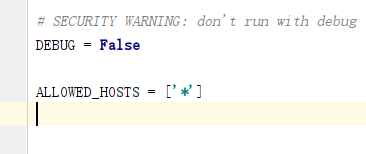 怎么将Django项目迁移到linux系统中Jun 01, 2023 pm 01:07 PM
怎么将Django项目迁移到linux系统中Jun 01, 2023 pm 01:07 PMDjango项目配置修改我们需要把原先的Django项目进行修改才能更好地进行项目迁移工作,首先需要修改的是settings.py文件。由于项目上线之后不能让用户看到后台的运行逻辑,所以我们要把DEBUG改成False,把ALLOWED_HOSTS写成‘*’,这样是为了允许从不同主机进行访问。由于linux中如果不加这句可能会出现文件找不到的情况,所以我们要把模板的路径进行拼接。由于做Django项目肯定进行过数据库的同步,所以我们要把migrations
 centos+nginx+uwsgi部署django项目上线的方法May 15, 2023 am 08:13 AM
centos+nginx+uwsgi部署django项目上线的方法May 15, 2023 am 08:13 AM我django项目叫yunwei,主要app是rabc和web,整个项目放/opt/下如下:[root@test-codeopt]#lsdjango_virtnginxredisredis-6.2.6yunwei[root@test-codeopt]#lsyunwei/manage.pyrbacstatictemplatesuwsgiwebyunwei[root@test-codeopt]#lsyunwei/uwsgi/cut_log.shloguwsgi.iniuwsgi.loguwsgi.p
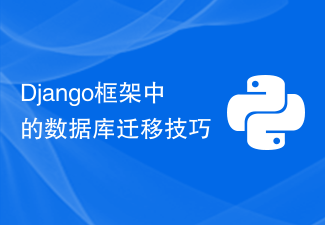 Django框架中的数据库迁移技巧Jun 17, 2023 pm 01:10 PM
Django框架中的数据库迁移技巧Jun 17, 2023 pm 01:10 PMDjango是一个使用Python语言编写的Web开发框架,其提供了许多方便的工具和模块来帮助开发人员快速地搭建网站和应用程序。其中最重要的一个特性就是数据库迁移功能,它可以帮助我们简单地管理数据库模式的变化。在本文中,我们将会介绍一些在Django中使用数据库迁移的技巧,包括如何开始一个新的数据库迁移、如何检测数据库迁移冲突、如何查看历史数据库迁移记录等等
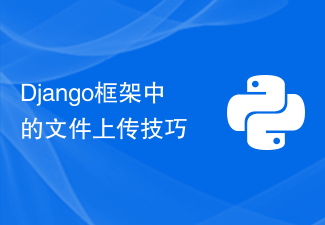 Django框架中的文件上传技巧Jun 18, 2023 am 08:24 AM
Django框架中的文件上传技巧Jun 18, 2023 am 08:24 AM近年来,Web应用程序逐渐流行,而其中许多应用程序都需要文件上传功能。在Django框架中,实现上传文件功能并不困难,但是在实际开发中,我们还需要处理上传的文件,其他操作包括更改文件名、限制文件大小等问题。本文将分享一些Django框架中的文件上传技巧。一、配置文件上传项在Django项目中,要配置文件上传需要在settings.py文件中进
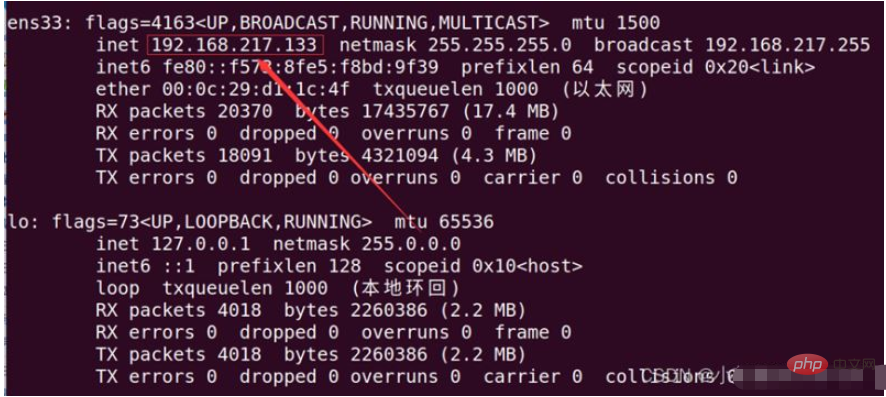 如何用nginx+uwsgi部署自己的django项目May 12, 2023 pm 10:10 PM
如何用nginx+uwsgi部署自己的django项目May 12, 2023 pm 10:10 PM第一步:换源输入命令换掉Ubuntu的下载源sudonano/etc/apt/sources.list将以下全部替换掉原文件,我这里用的是阿里的源,你也可以换其他的。debhttp://mirrors.aliyun.com/ubuntu/bionicmainrestricteddebhttp://mirrors.aliyun.com/ubuntu/bionic-updatesmainrestricteddebhttp://mirrors.aliyun.com/ubuntu/bionicunive
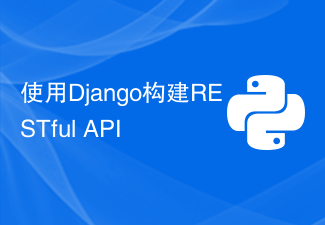 使用Django构建RESTful APIJun 17, 2023 pm 09:29 PM
使用Django构建RESTful APIJun 17, 2023 pm 09:29 PMDjango是一个Web框架,可以轻松地构建RESTfulAPI。RESTfulAPI是一种基于Web的架构,可以通过HTTP协议访问。在这篇文章中,我们将介绍如何使用Django来构建RESTfulAPI,包括如何使用DjangoREST框架来简化开发过程。安装Django首先,我们需要在本地安装Django。可以使用pip来安装Django,具体
 使用Python Django框架构建博客网站Jun 17, 2023 pm 03:37 PM
使用Python Django框架构建博客网站Jun 17, 2023 pm 03:37 PM随着互联网的普及,博客在信息传播和交流方面扮演着越来越重要的角色。在此背景下,越来越多的人开始构建自己的博客网站。本文将介绍如何使用PythonDjango框架来构建自己的博客网站。一、PythonDjango框架简介PythonDjango是一个免费的开源Web框架,可用于快速开发Web应用程序。该框架为开发人员提供了强大的工具,可帮助他们构建功能丰
 Django+Bootstrap构建响应式管理后台系统Jun 17, 2023 pm 05:27 PM
Django+Bootstrap构建响应式管理后台系统Jun 17, 2023 pm 05:27 PM随着互联网技术的快速发展和企业业务的不断扩展,越来越多的企业需要建立自己的管理后台系统,以便于更好地管理业务和数据。而现在,使用Django框架和Bootstrap前端库构建响应式管理后台系统的趋势也越来越明显。本文将介绍如何利用Django和Bootstrap构建一个响应式的管理后台系统。Django是一种基于Python语言的Web框架,它提供了丰富的功


Hot AI Tools

Undresser.AI Undress
AI-powered app for creating realistic nude photos

AI Clothes Remover
Online AI tool for removing clothes from photos.

Undress AI Tool
Undress images for free

Clothoff.io
AI clothes remover

AI Hentai Generator
Generate AI Hentai for free.

Hot Article

Hot Tools

SublimeText3 English version
Recommended: Win version, supports code prompts!

SAP NetWeaver Server Adapter for Eclipse
Integrate Eclipse with SAP NetWeaver application server.

WebStorm Mac version
Useful JavaScript development tools

SublimeText3 Linux new version
SublimeText3 Linux latest version

MinGW - Minimalist GNU for Windows
This project is in the process of being migrated to osdn.net/projects/mingw, you can continue to follow us there. MinGW: A native Windows port of the GNU Compiler Collection (GCC), freely distributable import libraries and header files for building native Windows applications; includes extensions to the MSVC runtime to support C99 functionality. All MinGW software can run on 64-bit Windows platforms.





